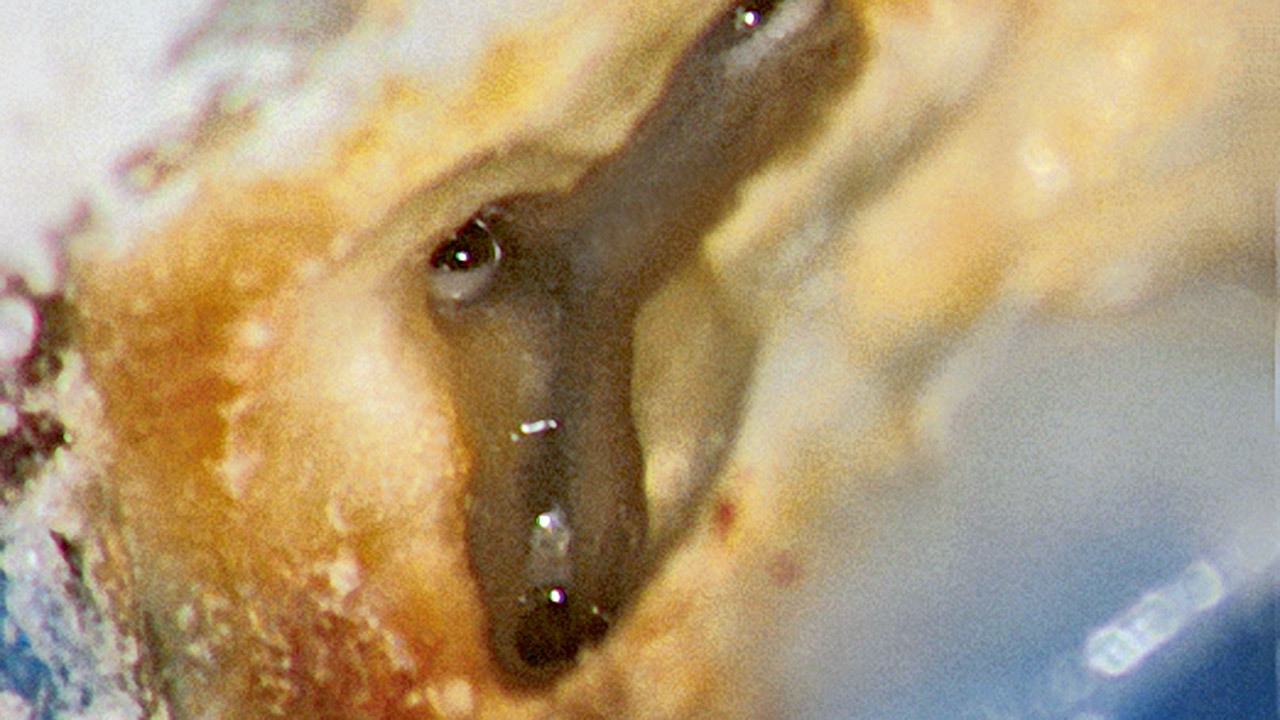Quintessenz Zahnmedizin, 2/2024
EndodontiePáginas 97-105, Idioma: AlemánHeckenbücker, Frank / Tulus, GabrielEine wirksame Aufklärung, die in der gerichtlichen Auseinandersetzung mit dem Patienten Bestand hat, ist aufwendig, aber unverzichtbar. Man kann darüber klagen, dass die von den Gerichten geforderte Aufklärung weit über das hinausgeht, was in der täglichen Praxis unproblematisch realisierbar ist. Jedoch sollte man versuchen, sich so weit wie möglich abzusichern. Im Praxisalltag helfen hierbei festgelegte Aufklärungsroutinen, die im Qualitätsmanagementsystem hinterlegt werden und deren Dokumentation sicher erfolgt. Hier empfiehlt sich ggf. die Verwendung von Aufklärungsbögen, soweit diese strukturiert mit dem Patienten durchgegangen werden. Alternativ ist auch ein Aufklärungsverzicht vonseiten des Patienten denkbar.
Manuskripteingang: 01.09.2023, Manuskriptannahme: 19.10.2023
Palabras clave: Rechtliche Anforderungen an die Aufklärung, Dokumentation, Aufklärungsbögen, praktische Umsetzung, Endodontologie
Quintessenz Zahnmedizin, 3/2020
EndodontiePáginas 242-252, Idioma: AlemánTulus, Gabriel / Verch, Stefan / Zipprich, Dirk / Perlea, Paula / Sanner, FrankTeil 2: TherapieDer zweite Teil des Beitrags erläutert Schritt für Schritt das Vorgehen bei endodontischen Notfällen in der zahnärztlichen Praxis. Dieses umfasst üblicherweise die Schmerzkontrolle durch Anästhesie und die Schaffung eines Zugangs zum unvorbehandelten oder vorbehandelten Wurzelkanalsystem mit anschließender spezifischer instrumenteller und medikamentöser Therapie. In seltenen Fällen, wenn die o. g. Maßnahmen aus objektiven Gründen nicht möglich oder zu risikoreich sind, sollte durch Ver-abreichung von Medikamenten und ggf. örtlicher Langzeitanästhesie versucht werden, überbrückend eine Schmerzfreiheit zu erzielen.
Palabras clave: Zahnschmerzen, Notfallbehandlung, Anästhesie, Pulpitis, symptomatische apikale Parodontitis, Wurzelkanalbehandlung
Quintessenz Zahnmedizin, 2/2020
EndodontiePáginas 128-137, Idioma: AlemánTulus, Gabriel / Verch, Stefan / Zipprich, Dirk / Perlea, Paula / Sanner, FrankTeil 1: Organisation und DiagnostikDie Hilfeleistung bei Patienten mit akuten Zahnschmerzen ist für Zahnärzte nicht nur aus ethischen, sondern auch aus juristischen Gründen obligatorisch. Jeder Patient, der sich mit akuten Zahnschmerzen an eine Praxis wendet, hat ein Recht auf Behandlung. Die Therapie sollte schnellstmöglich wirken und darf die Fortsetzung weiterer Maßnahmen in der Folge nicht erschweren oder unmöglich machen. Dabei muss rasch erkannt werden, ob es sich um einen absoluten Notfall handelt, der die unmittelbare Einleitung zahnärztlicher Maßnahmen erfordert – wie z. B. ein Frontzahntrauma mit Avulsion –, oder ob ein relativer Notfall vorliegt, bei dem ein gewisser Zeitpuffer besteht. Die schnelle und richtige Diagnose sowie eine gute Praxisorganisation sind der Schlüssel zur erfolgreichen Behandlung von Patienten mit akuten Zahnschmerzen. Der erste Teil des Beitrags widmet sich diesen Aspekten.
Palabras clave: Endodontischer Notfall, Zahnschmerzen, Pulpitis, symptomatische apikale Parodontitis, endodontische Diagnostik, Wurzelkanalbehandlung, odontogene Schmerzen
Endodontie, 1/2020
Páginas 69-70, Idioma: AlemánBeyl, Thomas / Tulus, GabrielTherapie nach traumatischer WurzelquerfrakturEndodontie, 1/2020
Páginas 85-88, Idioma: AlemánBeyl, Thomas / Tulus, GabrielAuflösung des Falls von Seite 69Endodontie, 3/2019
Páginas 339-340, Idioma: AlemánTulus, GabrielKasuistikEndodontie, 3/2019
Páginas 361-363, Idioma: AlemánTulus, GabrielAuflösung des Falls von Seite 357Endodontie, 4/2018
Páginas 355-361, Idioma: AlemánTulus, Gabriel / Weber, Thomas / Petrovits, Andreea / Galbinasu, Bogdan MihaiIn der Praxis stellen das Auffinden, die Präparation, Desinfektion und Obturation von Aufzweigungen von Wurzelkanälen gelegentlich eine Herausforderung für den Zahnarzt dar. In der vorliegenden Übersicht werden neben Erläuterungen zur Häufigkeit und Klassifikation von Aufzweigungen vor allem deren klinische Bedeutung, die sich daraus ergebenden Konsequenzen und die Behandlungsstrategien dargestellt.
Palabras clave: Zugangskavität, Wurzelkanalaufzweigungen, Dentalmikroskop, Zahnanatomie, Intrakanaläre Diagnostik
ENDO, 3/2018
Páginas 183-189, Idioma: InglésHülsmann, Michael / Ziegerahn, Anne / Tulus, GabrielObjective: It was the aim of this case series to evaluate the success rate of non-surgical retreatment of teeth with persisting apical periodontitis after apicectomy.
Materials and methods: Apical healing was evaluated radiographically in eighty-six consecutive cases of non-surgical retreatment of apicectomies with persisting apical periodontitis performed in a private dental practice from 2003 to 2011. Observation time was at least 12 months. Evaluation of pretreatment and recall radiographs was independently performed by two external dentists not involved in the treatment of the teeth using two-fold magnification. In cases of disagreement a consensus was reached by joint discussion. Success was defined as complete radiographical resolution of periapical lesions and absence of clinical symptoms at the time of the recall visit. Incomplete healing was not rated as success.
Results: The success rate was 69.5%, with an additional 10.2% classified as healing, and 20.3% as failures.
Conclusions: Non-surgical retreatment of teeth presenting with a persisting apical lesion after apicectomy can be regarded a reasonable treatment option with a limited prognosis in terms of apical healing.
Palabras clave: apicectomy, MTA, non-surgical retreatment, success rate
ENDO, 1/2018
Páginas 9-20, Idioma: InglésArnold, Michael / Friedrichs, Christian / Tulus, Gabriel / Verch, Stefan / Dennhardt, Holger / Sanner, FrankIntracoronal and intracanal diagnosis (ICD) are important aspects of the endodontic diagnostic process. The intracoronal diagnosis of the pulp cavity is completed before embarking on the root canal treatment itself, while the intracanal diagnosis of the root canal systems continues throughout the instrumentation of the root canal. During this diagnostic process, the endodontist records and documents the findings using optical magnification and coaxial light. The ICD serves to verify the preliminary diagnosis and facilitates the early detection of potential complications as well as an early identification of non-salvageable teeth. Therefore, this diagnostic step is recommended both before and during root canal treatment.
Palabras clave: dental operating microscope, diagnostics, endodontic access cavity, loupe, prognosis




